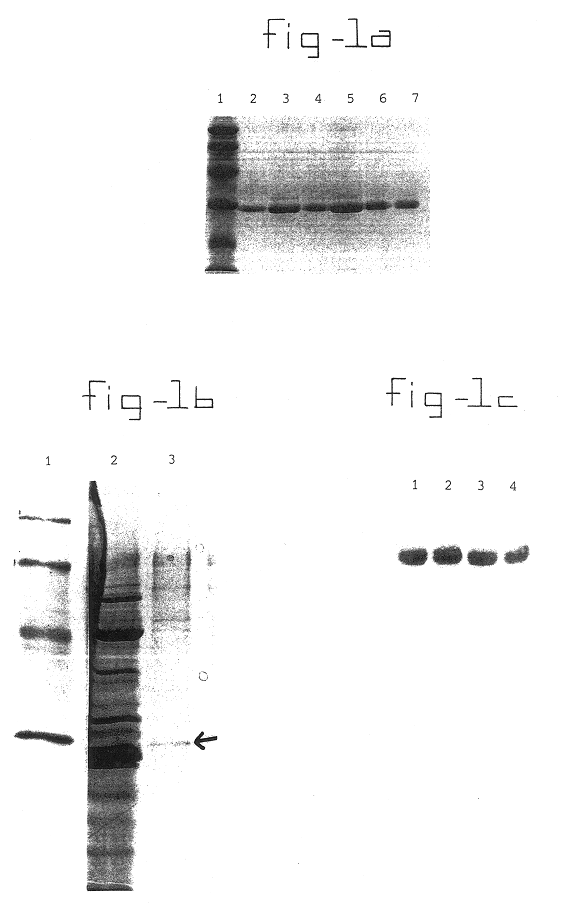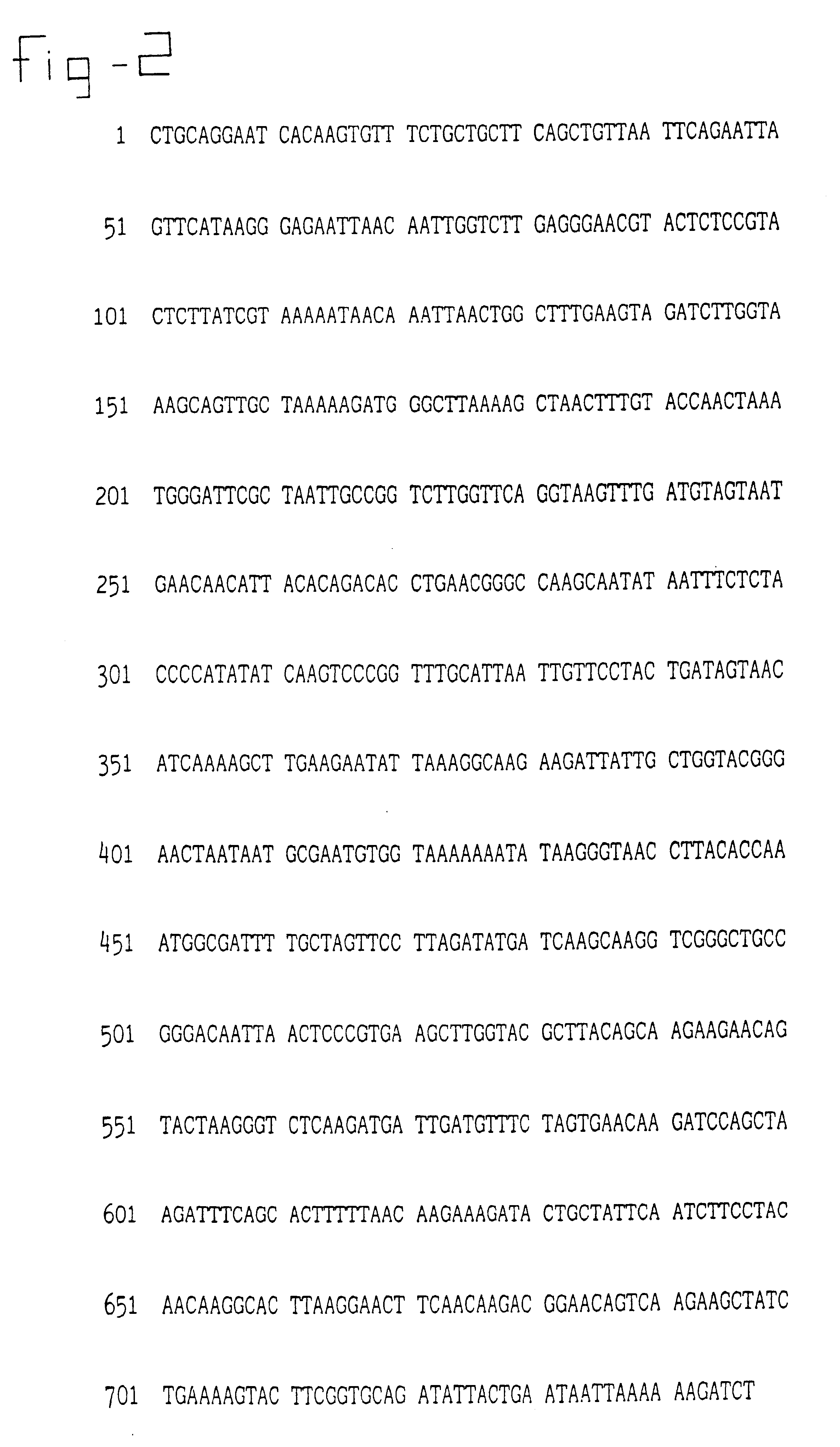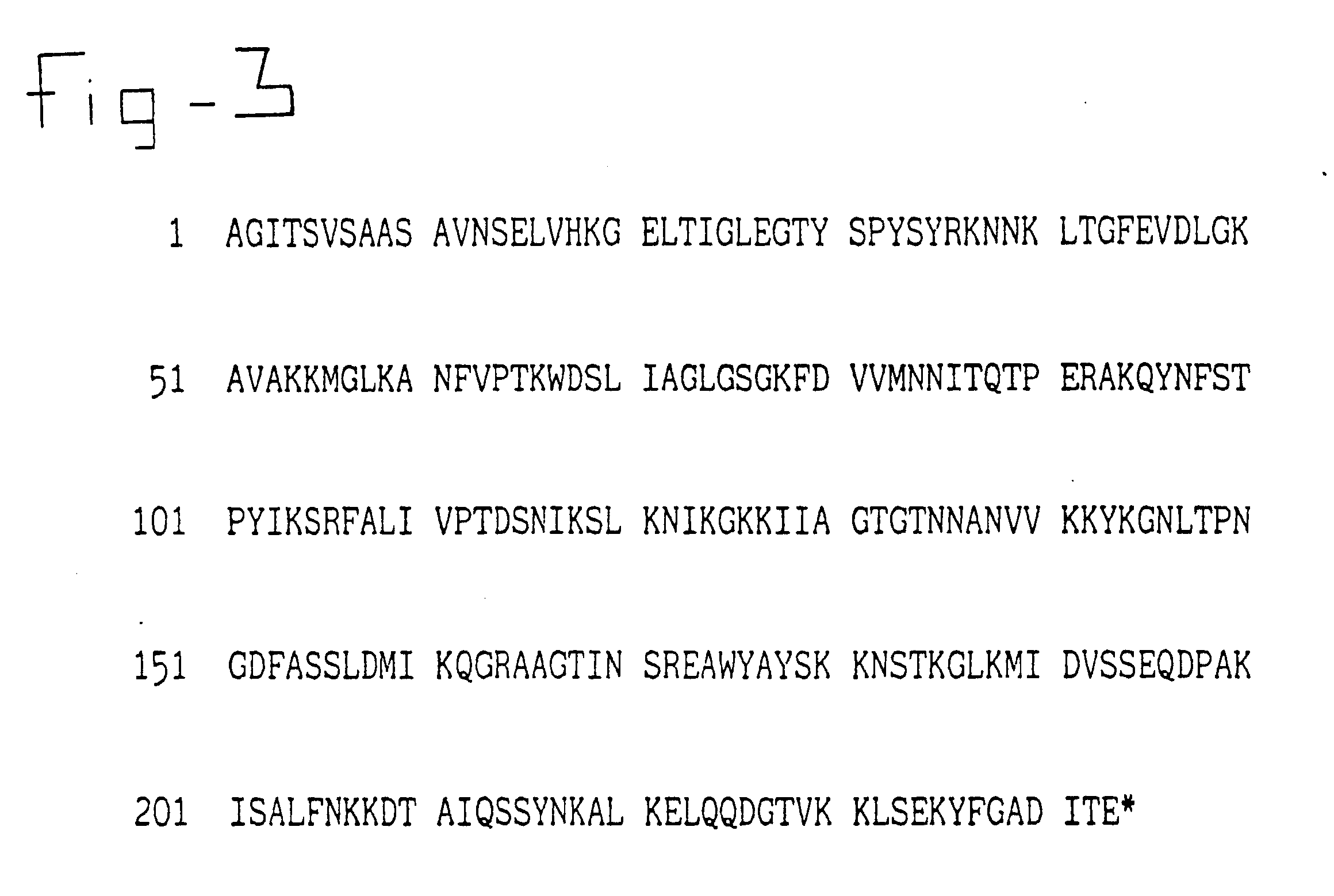Adherence factors of non pathogenic microorganisms and applications thereof for screening microorganisms for specific probiotic properties; novel pharmaceutical compositions and food additives comprising such microorganisms and adherence factors
a technology of adherence factors and microorganisms, which is applied in the field of adherence factors of non pathogenic microorganisms, can solve the problems of inability to detect pathogenic bacteria on the surface of host organisms, inability to detect pathogenic bacteria, etc., to achieve rapid screening
- Summary
- Abstract
- Description
- Claims
- Application Information
AI Technical Summary
Benefits of technology
Problems solved by technology
Method used
Image
Examples
examples
i) Purification and characterization of a surface protein from Lactobacillus fermentum that binds to small intestine mucus and gastric mucin from pig
Spent culture fluids from 14 or 24 hour cultures were collected by centrifuging at 6000 g for 20 min and dialysing at 4.degree. C. against ultra pure water. The retenate was concentrated by ultra filtration through a 14 KDa molecular weight cut off membrane. The high molecular weight fraction was freeze dried and stored at 4.degree. C. Spent culture fluid was also concentrated 10 times by hollow fibre ultrafilter and ammonium sulphate was dissolved in the concentrate (40, 60 and 100% of saturation at 4.degree. C.). The precipitates were collected by centrifugation (18000.times.g / 30 min). dissolved in ultra pure water and dialysed against 0.01M ammonium bicarbonate. The solutions were freeze dried and kept at 4.degree. C.
The freeze dried preparation from 24 hours spent culture fluid concentrated by ultra filtration was dissolved in HEPES...
PUM
| Property | Measurement | Unit |
|---|---|---|
| bed volume | aaaaa | aaaaa |
| flow rates | aaaaa | aaaaa |
| adhesion | aaaaa | aaaaa |
Abstract
Description
Claims
Application Information
 Login to View More
Login to View More - R&D
- Intellectual Property
- Life Sciences
- Materials
- Tech Scout
- Unparalleled Data Quality
- Higher Quality Content
- 60% Fewer Hallucinations
Browse by: Latest US Patents, China's latest patents, Technical Efficacy Thesaurus, Application Domain, Technology Topic, Popular Technical Reports.
© 2025 PatSnap. All rights reserved.Legal|Privacy policy|Modern Slavery Act Transparency Statement|Sitemap|About US| Contact US: help@patsnap.com



